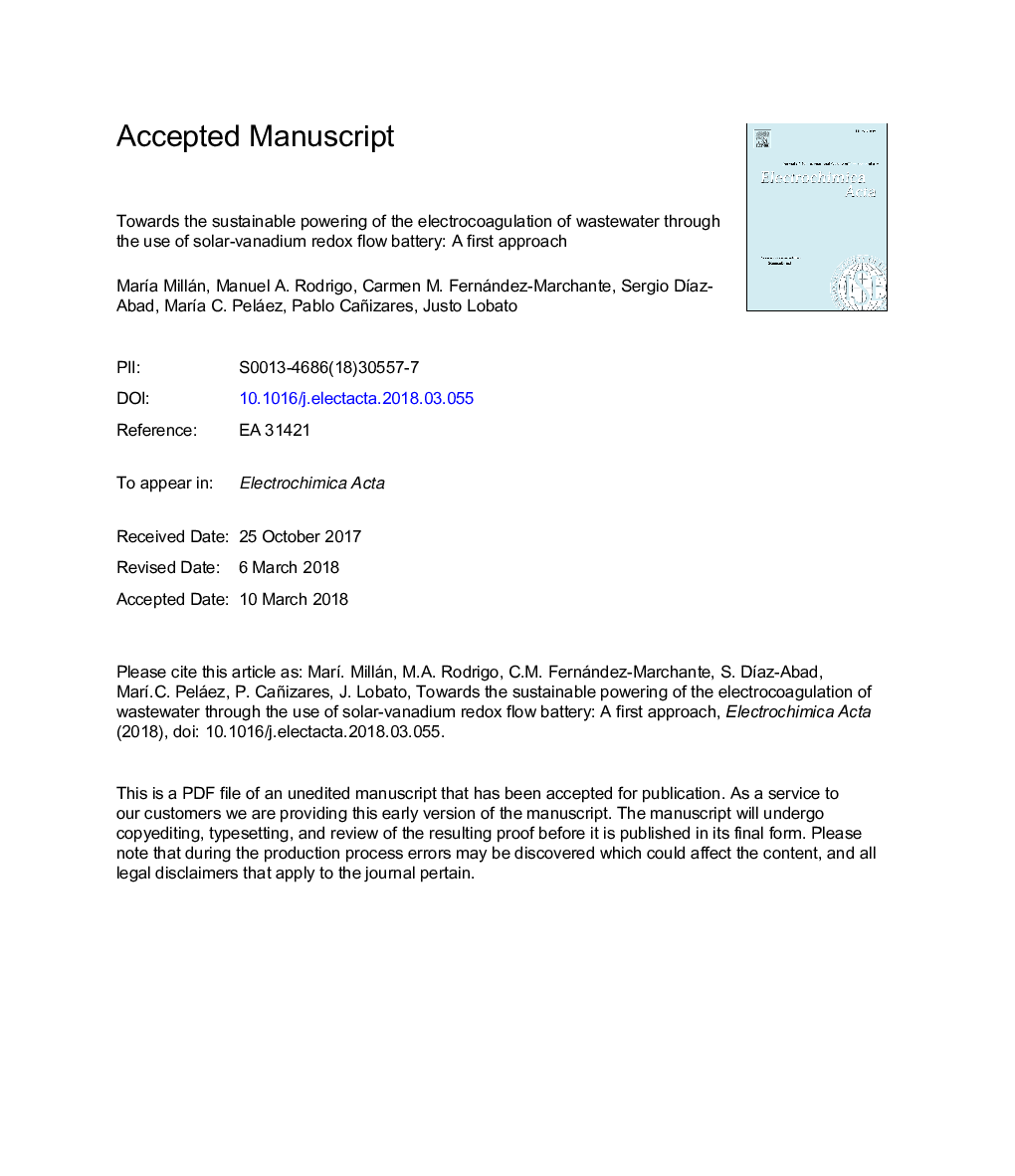| Article ID | Journal | Published Year | Pages | File Type |
|---|---|---|---|---|
| 6603374 | Electrochimica Acta | 2018 | 24 Pages |
Abstract
Electrocoagulation (EC) of wastewater polluted with 100â¯mgâ¯dmâ3 of oxyfluorfen (OFF) has been studied in cells with iron anodes and aluminum cathodes. Solar power combined with energy storage in a vanadium redox flow battery (VRFB) has been used to electrically power a continuous EC process. Three scenarios have been evaluated. Firstly, a constant current was applied to the EC reactor. Secondly, a solar energy profile was applied to the EC reactor and the RFB. Finally, the EC process was operated in the same way as the second scenario except that the RFB was powered with double the current charge than in the second scenario. The results show that electrocoagulation is not suitable for the complete removal of oxyfluorfen from wastewater, although it attained a significant pollutant accumulation into the flocs of 25%, showing potential as a pretreatment for this kind of waste. Likewise, results obtained pointed out that electrocoagulation can be powered directly with solar energy and this energy can also be regulated by VRFB, although, in the latter case, to attain the same treatment efficiency, around 1/3 more energy is required during energy storage. In addition, the higher the energy provided by the VRFB is, the lower the Fe/Al ratio produced during the electrocoagulation is.
Related Topics
Physical Sciences and Engineering
Chemical Engineering
Chemical Engineering (General)
Authors
MarÃa Millán, Manuel A. Rodrigo, Carmen M. Fernández-Marchante, Sergio DÃaz-Abad, MarÃa C. Peláez, Pablo Cañizares, Justo Lobato,
